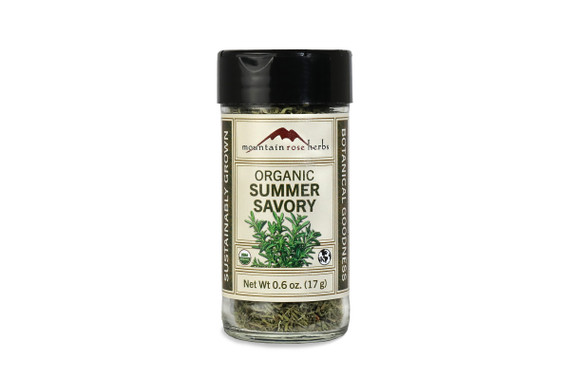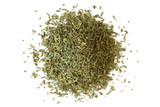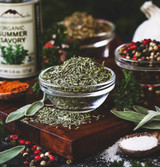A perennial in the Lamiaceae family, Satureja montana is slightly more bitter and stronger in flavor than its close cousin, summer savory. Native to the Mediterranean, winter savory grows in warm and temperate climates and makes a wonderful addition to herb gardens. The dried herb goes especially well with hardier dishes such as beans, proteins, and stews. A lovely aromatic, winter savory has also traditionally been enjoyed as an infusion.
Like its better-known cousin, summer savory, winter savory is most often used as a culinary herb, imparting a spicy, peppery flavor to dishes in which it is used. Easy to grow, the hardy perennial makes an excellent companion plant for most other herbs. Its aromatic scent repels harmful insects and pests while attracting bees and other pollinators. Winter savory has a stronger, sharper flavor than its summer cousin, but it still blends well with thyme, sage and rosemary as well as most mints. While its most popular uses are culinary, winter savory has often been used for medicinal purposes over the course of history.
Whether used for its medicinal properties or to flavor food, winter savory has been around since before the days of the Romans. Its sharp, spicy-peppery tang makes it a favorite flavoring for pork, beef and poultry, and a popular addition to soups and salads.
Precautions
No known precautions. We recommend that you consult with a qualified healthcare practitioner before using herbal products, particularly if you are pregnant, nursing, or on any medications.
This information has not been evaluated by the Food and Drug Administration. This product is not intended to diagnose, treat, cure, or prevent any disease. For educational purposes only.












